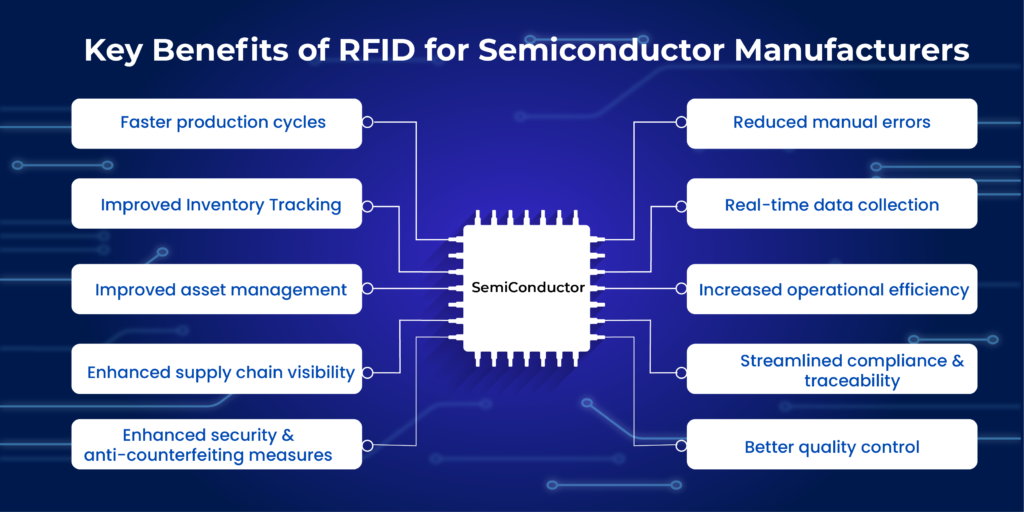Introduction
The semiconductor industry is a highly complex and capital-intensive sector, where the efficient management of assets is crucial for maintaining a competitive edge. From specialized manufacturing equipment to valuable inventory, semiconductor companies must keep a tight grip on their assets to ensure smooth operations, compliance, and profitability. However, traditional asset tracking methods, such as manual inventory counts and barcode scanning, often fall short in providing the real-time visibility and automation required in this fast-paced environment.
Recognizing the limitations of conventional approaches, semiconductor manufacturers are increasingly turning to radio frequency identification (RFID) technology to revolutionize their asset management strategies. RFID offers a transformative solution that enables enhanced inventory tracking, improved productivity, and reduced operational costs – all of which are essential for success in the semiconductor industry.
The Rise of RFID in Asset Management
RFID technology utilizes radio frequency signals to identify, categorize, and track various assets wirelessly. Unlike barcode systems that require line-of-sight scanning, RFID tags can be detected from a distance, even when hidden or obscured, allowing for seamless and automated asset tracking.
RFID has numerous advantages over traditional methods. RFID systems provide real-time visibility into asset locations, eliminating the time-consuming and error-prone process of manual inventory checks. They also enable the automatic identification and monitoring of tools, equipment, and materials as they move through the manufacturing process, ensuring better traceability and data-driven decision-making.
Key Benefits of RFID for Semiconductor Manufacturers

Improved Inventory Visibility
RFID technology allows semiconductor manufacturers to maintain a comprehensive, real-time understanding of their assets. By tagging individual items with RFID tags, companies can track the whereabouts of critical equipment, tools, and materials throughout the production lifecycle. This enhanced visibility empowers manufacturers to quickly locate misplaced or lost assets, reducing costly downtime and improving overall operational efficiency.
Enhanced Productivity and Efficiency
Automating asset tracking with RFID significantly reduces the time and labor required for manual inventory management tasks. Instead of dedicating valuable employee hours to physically searching for and counting assets, RFID systems can automatically update inventory records, freeing up staff to focus on more strategic priorities. Additionally, the improved visibility and monitoring capabilities of RFID enable semiconductor manufacturers to optimize asset utilization, ensuring that resources are allocated effectively and efficiently.
Increased Regulatory Compliance
In the highly regulated semiconductor industry, maintaining comprehensive records and documentation of assets is crucial for compliance. RFID technology provides an auditable trail of asset movements and usage, which is essential for satisfying the demands of regulatory bodies and mitigating the risk of lost or stolen items that could lead to compliance issues.
Cost Savings
The cost-saving benefits of RFID in semiconductor asset management are multifaceted. By reducing the time and labor associated with manual tracking, companies can realize substantial savings in operational expenses. Furthermore, the improved visibility and reduced losses of assets translate directly into financial gains, as the risk of misplaced or stolen items is significantly diminished.
Overcoming Challenges with RFID Deployment
While the benefits of RFID for semiconductor asset management are clear, the implementation of this technology is not without its challenges. Semiconductor manufacturers may have concerns about the initial investment, the reliability of RFID systems in their industrial environments, and potential interference with sensitive manufacturing processes.
To address these challenges, it is essential to work with experienced RFID solution providers who understand the unique needs of the semiconductor industry. Careful planning, thorough testing, and a phased approach to implementation can help semiconductor companies overcome the hurdles and unlock the full potential of RFID-enabled asset tracking.
Solution
To address the unique challenges faced by semiconductor manufacturers in deploying RFID systems, specialized solutions have been developed to meet their specific requirements. One such solution is the TagMatiks platform, which has been designed to provide reliable and effective asset tracking even in the controlled environments of semiconductor cleanrooms.
Use TagMatiks Platform for Asset Tracking
One solution that has proven particularly effective for semiconductor manufacturers is the TagMatiks platform. TagMatiks is a specialized RFID-based asset-tracking solution that has been designed specifically for the demands of the semiconductor industry.
The TagMatiks AT offers seamless integration with existing enterprise resource planning (ERP) and manufacturing execution systems (MES), ensuring a smooth transition and data flow between asset tracking and other critical business systems. Its robust RFID software has been engineered to withstand the challenging industrial environments found in semiconductor facilities, providing reliable and accurate asset detection and monitoring.
Additionally, the TagMatiks AT features advanced analytics and reporting capabilities, empowering semiconductor manufacturers with the data-driven insights needed to make informed decisions about asset management. The solution’s scalability also allows it to accommodate the growing asset volumes and expanding facilities common in the semiconductor industry.
The Future of RFID in Semiconductor Asset Management
As RFID technology continues to evolve, the semiconductor industry is poised to reap even greater benefits from this asset-tracking solution. Advancements in RFID tag capabilities, such as increased memory, sensing abilities, and longer read ranges, will further enhance the real-time monitoring and traceability of semiconductor assets.
Looking ahead, RFID may also find new applications in the semiconductor industry, such as tracking work-in-progress (WIP) materials, managing the lifecycle of specialized tools and equipment, and integrating with augmented reality (AR) systems for enhanced maintenance and troubleshooting. The versatility of RFID technology, combined with the ongoing innovations in the semiconductor sector, suggests that this asset management solution will remain a critical component of the industry’s future.
Conclusion
In the fast-paced and highly regulated semiconductor industry, the efficient management of assets is essential for maintaining a competitive edge. As traditional tracking methods prove increasingly inadequate, semiconductor manufacturers are turning to RFID technology to revolutionize their asset management strategies.
By leveraging the power of RFID, companies can achieve improved inventory visibility, enhanced productivity and efficiency, increased regulatory compliance, and significant cost savings. While implementation challenges exist, working with specialized solutions like the TagMatiks platform can help semiconductor manufacturers overcome these hurdles and unlock the full transformative potential of RFID-enabled asset tracking.